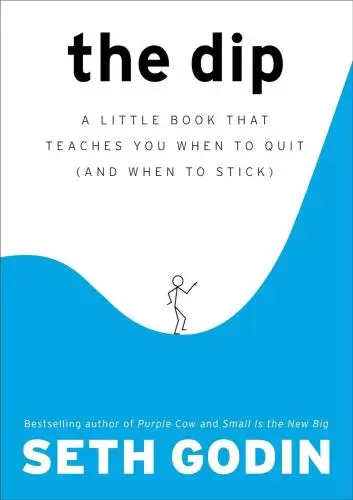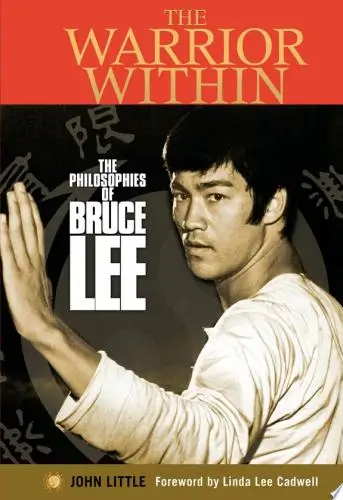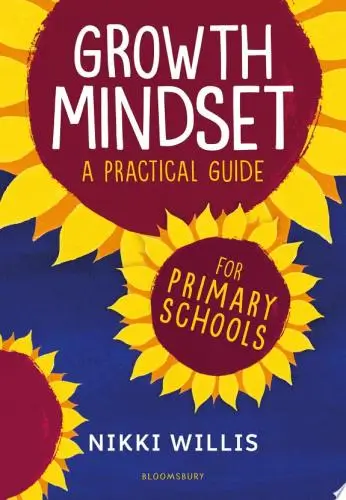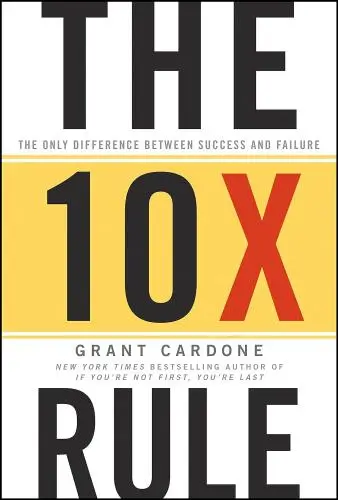
The Dip
A Little Book That Teaches You When to Quit (and When to Stick)
What's it about?
The Dip is a guide to navigating the challenges and setbacks we face on the road to success. Godin explores the concept of "the dip," a temporary setback that occurs before reaching the next level of success. He emphasizes the importance of knowing when to push through the dip and when to quit, offering valuable insights on strategic quitting. This book is a must-read for anyone looking to achieve their goals with clarity and purpose.
About the Author
Seth Godin is a prolific author and marketing expert, known for his focus on the post-industrial revolution, the way ideas spread, marketing, quitting, leadership, and most of all, changing everything. His notable works include "Purple Cow" and "Linchpin", showcasing his unique perspective on making remarkable products and being indispensable.
10 Key Ideas of The Dip
Identify Your Dip Early On
Understanding the concept of 'The Dip'—the period of hard struggle that precedes success—is crucial.
By recognizing this phase early in your endeavors, you can prepare mentally and strategically for the challenges ahead.
This foresight allows for better resource allocation, including time, effort, and finances, ensuring you're not blindsided by obstacles but instead are equipped to tackle them head-on.
Learn DeeperReflect on Past Challenges: Take some time to think about past endeavors where you faced significant challenges. Identify the point at which things got tough and how you responded. This reflection can help you recognize similar patterns in future projects.
Set Realistic Milestones: Break down your goal into smaller, manageable milestones. This approach not only makes the journey more digestible but also allows you to celebrate small wins along the way, keeping motivation high during tough times.
Allocate Resources Wisely: Assess the resources (time, money, energy) you have available and plan how to use them efficiently. Consider setting aside a 'challenge fund' or 'time bank' specifically for overcoming unexpected hurdles.
Seek Support Systems: Surround yourself with a network of mentors, peers, and supportive friends who understand your goals. Having a solid support system can provide guidance, encouragement, and practical help when you hit the dip.
Embrace Learning and Adaptation: View each challenge as an opportunity to learn and grow. Be open to adapting your strategies based on what the dip teaches you. This mindset can transform obstacles into stepping stones towards your goal.
- Example
Imagine you're launching a new business. The initial excitement fades as you encounter unforeseen regulatory hurdles and market resistance. Recognizing this as 'The Dip,' you've already earmarked additional funds and time for this phase, allowing you to navigate through without panic.
- Example
You're training for a marathon. After the initial progress, you hit a plateau where improvements seem minimal, and the training becomes monotonous. Knowing this dip is part of the process, you've arranged for a running coach and a supportive training group to keep you motivated and help push through the tough phase.
Embrace Strategic Quitting
Quitting isn't always a sign of failure; it's often a strategic move to conserve resources for more promising opportunities.
The key is to quit activities that are unlikely to lead to breakthrough success or those that are mere distractions from your core goals.
This approach ensures that your efforts are concentrated on pursuits with the highest potential return, maximizing overall productivity and success.
Learn DeeperIdentify Your Core Goals: Start by clearly defining what you truly want to achieve in your personal and professional life. This clarity will help you distinguish between what's essential and what's not.
Conduct a 'Quit Audit': Regularly review your current projects, commitments, and daily activities. Ask yourself, 'Is this moving me closer to my core goals?' If the answer is no, consider it a candidate for quitting.
Evaluate the Opportunity Cost: Before quitting, assess what you could be doing with the time, energy, or resources you're currently investing in the activity. If the alternative has a higher potential return, it might be time to quit.
Plan Your Quit: Don't quit impulsively. Plan how you'll exit the activity or commitment, considering any obligations or expectations you need to manage.
Embrace Strategic Experimentation: After quitting something that doesn't serve your core goals, use the freed-up resources to experiment with new strategies or projects that have the potential for higher returns.
- Example
A marketing professional realizes they're spending too much time on low-return social media platforms and decides to quit those platforms. Instead, they focus their efforts on a targeted email marketing campaign, which aligns more closely with their goal of increasing direct customer engagement.
- Example
An entrepreneur running multiple side projects finds that one of them is consuming a disproportionate amount of time without showing promising results. They decide to quit this project, reallocating their time and resources to another venture that has shown early signs of success and aligns better with their long-term vision.
Leverage Scarcity as an Advantage
In many fields, scarcity creates value.
By becoming the best in a niche area, you make yourself scarce—and therefore more valuable.
This involves focusing intensely on a specific skill or market and pushing through the Dip to achieve unparalleled expertise or positioning.
Such scarcity makes you irreplaceable and allows you to command higher rewards for your work.
Learn DeeperIdentify Your Niche: Start by pinpointing a specific area or skill where you can excel. This could be something you're already good at or a field that fascinates you. The key is to find a niche with enough demand but not too much competition.
Deep Dive into Learning: Once you've chosen your niche, immerse yourself in learning everything you can about it. This means reading books, taking courses, attending workshops, and practicing relentlessly. The goal is to become an expert.
Push Through the Dip: There will be moments when progress seems slow, and the effort feels unrewarding—this is the Dip. It's crucial to persevere during these times, as pushing through the Dip is what separates the experts from the rest.
Showcase Your Expertise: As you become more skilled, start sharing your knowledge. This could be through blogging, speaking at conferences, or offering specialized services. Visibility in your niche will further establish your scarcity and value.
Negotiate Based on Value: With your established expertise, you're in a position to negotiate higher fees or salaries. Remember, your scarcity makes you valuable, so don't be afraid to ask for compensation that reflects your unique contributions.
- Example
A graphic designer decides to specialize in creating branding for eco-friendly startups. By focusing on this niche, they become a go-to expert, allowing them to command higher rates and work with clients who truly value their specific skill set.
- Example
A software developer learns everything there is to know about cybersecurity in the Internet of Things (IoT) devices. Their deep expertise in this niche area makes them highly sought after by companies developing IoT products, leading to lucrative job offers and consulting opportunities.
Commit Fully to Your Goal
Half-hearted efforts rarely lead to success, especially when facing the Dip.
Commitment means dedicating the necessary resources, time, and energy to push through challenges.
It also means setting clear, achievable goals and regularly reassessing your strategies to ensure they align with your ultimate objective.
Full commitment keeps you motivated and focused, even when progress seems slow.
Learn DeeperSet Specific Goals: Clearly define what success looks like for you. Whether it's a career milestone, a personal project, or a fitness goal, having a specific target in mind will help you focus your efforts and measure your progress.
Allocate Resources Wisely: Assess what resources (time, money, energy) you can dedicate to your goal. Be realistic but also committed. For instance, if you're working towards a promotion, consider investing in courses that enhance your skills, or if it's a fitness goal, perhaps a gym membership or home equipment.
Regularly Review and Adjust Your Plan: Set aside time each week to review your progress towards your goal. Are you on track? Do you need to adjust your strategies? This regular check-in keeps you accountable and flexible to change course if necessary.
Seek Support When Needed: Don't hesitate to ask for help or seek advice from those who have achieved similar goals. Whether it's a mentor, a coach, or a supportive friend, having someone to offer guidance and encouragement can make a significant difference.
- Example
Imagine you're aiming to run a marathon. You commit by registering for the race, buying the right running shoes, and following a training plan. Each week, you assess your progress, adjusting your diet and sleep patterns to improve your performance.
- Example
Consider a goal of launching your own business. You start by dedicating two hours every evening to work on your business plan, saving a portion of your income for startup costs, and attending networking events to learn from experienced entrepreneurs. Regularly, you review your business plan and financial projections to ensure you're on the right path.
Anticipate and Plan for Setbacks
Setbacks are inevitable in any challenging endeavor.
Anticipating these challenges allows you to develop contingency plans and resilience strategies.
This proactive approach helps minimize the impact of setbacks and ensures that you remain on track toward your goals, even when faced with unexpected difficulties.
Learn DeeperVisualize Potential Challenges: Spend time regularly to think about what challenges you might face in your current projects or goals. Imagine different scenarios and how they could impact your progress.
Create a Contingency Plan: For each challenge you've identified, develop a plan on how to address it. This could involve setting aside resources, finding mentors or support networks, or learning new skills that could help you navigate through the difficulty.
Practice Resilience Techniques: Strengthen your ability to bounce back from setbacks by practicing mindfulness, stress management, and positive thinking. Regularly engaging in activities that build your mental and emotional resilience will prepare you for when challenges arise.
Review and Adjust Regularly: Make it a habit to review your goals and the challenges you anticipate facing. As you progress, new challenges may emerge while others may become irrelevant. Adjust your plans and strategies accordingly.
- Example
If you're launching a new product, a potential setback could be lower than expected sales. A contingency plan could involve having a promotional strategy in place, such as a discount offer or a special event to boost interest and sales.
- Example
For someone aiming to run a marathon, an injury could be a significant setback. A resilience strategy might include cross-training activities that maintain fitness without worsening the injury, alongside consulting a physiotherapist for a recovery plan.
Deeper knowledge. Personal growth. Unlocked.
Unlock this book's key ideas and 15M+ more. Learn with quick, impactful summaries.
Read Full SummarySign up and read for free!
The Dip Summary: Common Questions
Experience Personalized Book Summaries, Today!
Discover a new way to gain knowledge, and save time.
Sign up for our 7-day trial now.
No Credit Card Needed

Similar Books
Trending Summaries

Peak
Anders Ericsson
Never Split the Difference
Chris Voss
Smart Brevity
Jim VandeHei
The Psychology of Money
Morgan Housel
The First 90 Days
Michael D. Watkins
Atomic Habits
James Clear
Thinking, Fast and Slow
Daniel Kahneman
The Body Keeps the Score
Bessel van der Kolk M.D.
The Power of Regret
Daniel H. Pink
The Compound Effect
Darren HardyNew Books

The ^AOxford Handbook of Job Loss and Job Search
Ute-Christine Klehe PhD
Job Interviews For Dummies®
Joyce Lain Kennedy
Job Interviews In A Week
Alison Straw
Handbook of Career Development
Gideon Arulmani
The Art of Spending Money
Morgan Housel
$100M Offers
Alex Hormozi
A Candle for Kiri
Edna Mae Holm
Principles of Marketing, Global Edition
Gary Armstrong
Serpent Rising: The Kundalini Compendium
Neven Paar










